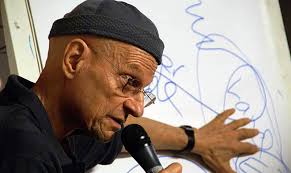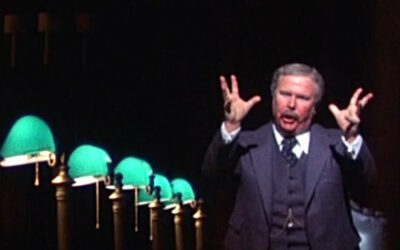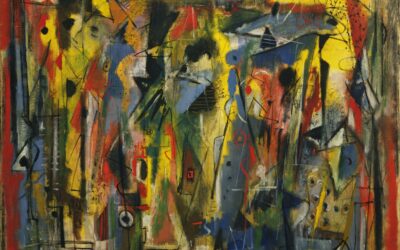Who is Arnold Mindell?

Arnold Mindell is a pioneering figure in the field of depth psychology who has made significant contributions through his development of process-oriented psychology, also known as process work. Mindell’s approach represents a creative synthesis of Jungian psychology, physics, Taoism, shamanism, and systems theory. It offers a innovative framework for working with individuals, relationships, and groups that honors the wisdom of the unconscious and the transformative power of following the process.
- Official Website: Arnold Mindell
- Books: Processmind Amazon
- YouTube Lecture: Arnold Mindell on Process Work
- Interview: In Conversation with Arnold Mindell
- Podcast: Mindell on Process-Oriented Psychology
- Article: Mindell’s Process-Oriented Psychology
- Institute: Mindell at Process Work Institute
- Research: Publications by Arnold Mindell
- Quotes: Arnold Mindell Quotes
- Lecture Series: Mindell on Quantum Mind
1. Life and Work
Arnold Mindell was born in 1940 in Schenectady, New York. He initially trained as a physicist at MIT before shifting his focus to psychology. Mindell received his Ph.D. in psychology from Union Institute and also trained as a Jungian analyst at the C.G. Jung Institute in Zurich.
In the 1970s, Mindell began to develop process work while working with patients at the Jung Institute. He found that many of his clients’ issues could not be adequately addressed through classical Jungian analysis alone. Mindell started to experiment with more holistic and somatically-oriented approaches that attended to the moment-to-moment unfolding of the psyche.
In 1982, Mindell founded the Process Work Center of Portland (now the Process Work Institute) with his wife Amy Mindell. The institute offers training programs in process work and has attracted students from around the world. Mindell has also applied his approach to conflict resolution and leadership development, working with organizations and communities globally.
Mindell has authored over 20 books that explore the theory and practice of process work. His seminal works include Dreambody (1982), The Shaman’s Body (1993), Sitting in the Fire (1995), and Quantum Mind (2000). Through his writings and teachings, Mindell has inspired a new generation of therapists and change agents to work at the edges of consciousness.
2. Key Ideas and Contributions
2.1 The Dreambody and Somatic Experience
Central to process work is the concept of the “dreambody” – the idea that our physical symptoms, movements, and sensations are meaningful expressions of the unconscious. For Mindell, the body is not separate from the psyche but is a direct channel for the communication of deeper psychological and spiritual processes.
Mindell suggests that by attending to the subtleties of somatic experience – the felt sense, proprioceptive signals, muscular tensions, etc. – we can access the intelligence of the unconscious. The task of the therapist is to help the client amplify and unfold these somatic experiences, allowing their inherent meaning and direction to emerge.
This focus on the dreambody represents a significant extension of Jungian psychology. While Jung recognized the importance of the psyche-soma connection, his approach remained largely focused on the interpretation of symbolic material. Mindell’s work brings the body to the forefront, offering a more experiential and somatically-grounded approach to individuation.
2.2 Following the Process
For Mindell, the key to psychological growth and conflict resolution lies in following the process – the organic unfolding of the psyche in the present moment. Rather than imposing preconceived ideas or interpretations, the process worker seeks to align with the inherent wisdom and directionality of the client’s experience.
This requires a stance of deep listening and not-knowing, a willingness to be surprised by the unexpected twists and turns of the psyche. The therapist tracks the client’s verbal and nonverbal signals, looking for “flirts” or “edges” – the subtle hints of something wanting to emerge from the unconscious.
By amplifying these signals and supporting their unfolding, the process worker helps the client to integrate previously marginalized aspects of their experience. This can lead to a greater sense of wholeness, fluidity, and spontaneity in life.
Mindell’s emphasis on following the process challenges the hierarchical authority of classical Jungian analysis. Rather than positioning the analyst as the expert interpreter of the psyche, process work sees the therapeutic relationship as a collaborative partnership in which both parties are learning from the wisdom of the unconscious.
2.3 Deep Democracy and Worldwork
Mindell has also applied the principles of process work to the realm of social and political change. He coined the term “deep democracy” to describe a mode of engaging with diversity and conflict that goes beyond superficial consensus or majority rule.
In a deeply democratic process, all voices and perspectives are valued, including those that are marginalized or disturbing. The aim is not to eliminate conflict but to find creative ways of harnessing its energy for transformation. This requires a willingness to “sit in the fire” of intense emotions and polarities, trusting that something new can emerge from the chaos.
Mindell has developed a group process method called “worldwork” to facilitate deep democracy on a larger scale. Worldwork brings together stakeholders from diverse backgrounds to explore the complex dynamics of social issues such as racism, sexism, and environmental destruction. Through a combination of dialogue, movement, and role-play, participants can access the deeper mythic and archetypal dimensions of the conflict.
Worldwork represents a significant extension of Jungian psychology into the sociopolitical domain. It recognizes that individual healing and collective transformation are inextricably linked, and that the unconscious is not just personal but also social and transpersonal.
2.4 The Quantum Mind and Synchronicity
In his later work, Mindell has explored the connections between process work and the emerging paradigm of quantum physics. He suggests that the mind and the universe are fundamentally entangled, and that our experience of reality is shaped by the participation of consciousness.
For Mindell, the phenomena of synchronicity and paranormal experiences are not anomalies but are reflections of the deep interconnectedness of psyche and matter. By attending to the subtle signals of the quantum mind – the realm of intuition, dreaming, and imagination – we can tap into a larger field of information and guidance.
This quantum perspective extends Jung’s notion of the collective unconscious, suggesting that the psyche is not just a repository of archetypal patterns but is a dynamic, self-organizing system that is constantly co-creating reality. It invites us to see ourselves not as separate individuals but as part of a vast, intelligent web of relationships.
3. Critique and Limitations
While Mindell’s work offers a compelling vision of psychological and social transformation, it is not without its limitations and critics. Some have argued that process work’s emphasis on following the moment-to-moment unfolding of experience can lead to a kind of therapeutic relativism, where anything goes and there are no clear guidelines for discerning healthy from unhealthy processes.
Others have criticized Mindell’s use of the term “deep democracy” as potentially appropriative or misleading, given the complex history and contested meanings of democracy as a political concept. There are also questions about how effectively the principles of deep democracy can be applied in contexts of severe power imbalances or structural oppression.
From a Jungian perspective, some have suggested that Mindell’s approach risks losing sight of the archetypal depth and symbolic richness of the psyche in its focus on somatic experience and process. There is a danger that the dreambody could be reduced to a set of techniques or interventions rather than being seen as a living, numinous reality.
Finally, there are challenges in integrating Mindell’s quantum vision with the established frameworks of depth psychology and psychotherapy. While the idea of the quantum mind is intriguing, it can be difficult to operationalize in clinical practice without falling into speculation or pseudoscience.
4. Legacy and Relevance
Despite these limitations, Mindell’s work offers a valuable set of tools and perspectives for navigating the complexities of our time. In an era of ecological crisis, social fragmentation, and spiritual yearning, process work provides a framework for engaging with the unknown and the emergent in a spirit of curiosity and creativity.
Mindell’s emphasis on somatic experience and embodiment is particularly relevant in a culture that is increasingly disconnected from the wisdom of the body. By learning to listen to the subtle signals of the dreambody, we can access a deeper intelligence that can guide us through the challenges of individuation and social change.
The principles of deep democracy and worldwork also offer a much-needed alternative to the polarizing dynamics of contemporary political discourse. By creating spaces where diverse voices can be heard and conflicting perspectives can be held in creative tension, we can begin to build a more inclusive and participatory society.
At a time when the limitations of classical Jungian analysis are becoming increasingly apparent, Mindell’s work points the way towards a more fluid, embodied, and socially engaged form of depth psychology. By bridging the personal and the political, the somatic and the symbolic, the ordinary and the numinous, process work invites us to embrace the full complexity of the psyche and the world.
As we face the challenges of the 21st century, Mindell’s vision of the quantum mind and the interconnectedness of all things is a reminder of the vast, untapped potential that lies within and around us. By learning to follow the process and trust the intelligence of the unconscious, we can participate more fully in the unfolding of a new era of human and planetary flourishing.
5. Conclusion
The work of Arnold Mindell represents a significant extension and revitalization of the Jungian tradition for the contemporary world. Through his development of process-oriented psychology, Mindell has offered a framework for engaging with the depths of the psyche in a way that is embodied, relational, and socially relevant.
Mindell’s emphasis on the dreambody, following the process, deep democracy, and the quantum mind invites us to expand our understanding of what it means to be human and to participate in the larger web of life. It challenges us to let go of fixed identities and preconceived ideas in order to align with the wisdom of the unconscious and the emergent properties of the moment.
While Mindell’s work is not without its limitations and critics, it offers a valuable set of tools and perspectives for navigating the complexities of individuation and social change. By learning to listen to the subtle signals of the body, to hold space for diverse voices and perspectives, and to trust the intelligence of the quantum mind, we can begin to co-create a more just, sustainable, and vibrant world.
As the Jungian community continues to evolve and adapt to the challenges of our time, Mindell’s legacy serves as an inspiration and a provocation. It invites us to continue pushing the boundaries of what is possible in our work, to embrace the unknown and the emergent, and to stay true to the transformative power of the unconscious.
In a world that is increasingly polarized and fragmented, process work offers a path towards wholeness and connection. By following the process and trusting the dreambody, we can begin to bridge the divides within and between us, and to participate more fully in the great work of individual and collective transformation.
May the work of Arnold Mindell continue to inspire and guide us as we navigate the uncharted territories of the 21st century and beyond. And may we have the courage and the grace to follow the process wherever it may lead, in service of a more awakened and compassionate world.
Bibliography:
Goodbread, J. (2009). Living on the Edge: The Mythical, Spiritual, and Philosophical Roots of Social Marginality. Nova Science Publishers.
Mindell, A. (1982). Dreambody: The Body’s Role in Revealing the Self. Sigo Press.
Mindell, A. (1993). The Shaman’s Body: A New Shamanism for Transforming Health, Relationships, and the Community. HarperSanFrancisco.
Mindell, A. (1995). Sitting in the Fire: Large Group Transformation Using Conflict and Diversity. Lao Tse Press.
Mindell, A. (2000). Quantum Mind: The Edge Between Physics and Psychology. Lao Tse Press.
Mindell, A. (2002). The Deep Democracy of Open Forums: Practical Steps to Conflict Prevention and Resolution for the Family, Workplace, and World. Hampton Roads Publishing.
Mindell, A. (2010). ProcessMind: A User’s Guide to Connecting with the Mind of God. Quest Books.
Mindell, A. (2017). Conflict: Phases, Forums, and Solutions. World Tao Press.
Reiss, G. (2019). A Jungian Approach to Spontaneous Drawing: A Window on the Soul. Routledge.
Siver, S. (2006). The Dreamtelling Manual: A Guide for Using Dreams in Group Facilitation. FriesenPress.
Read More Depth Psychology Articles:
Taproot Therapy Collective Podcast
Jungian Innovators
Jungian Topics
How Psychotherapy Lost its Way
Therapy, Mysticism and Spirituality?
The Symbolism of the Bollingen Stone
What Can the Origins of Religion Teach us about Psychology
The Major Influences from Philosophy and Religions on Carl Jung
How to Understand Carl Jung
How to Use Jungian Psychology for Screenwriting and Writing Fiction
The Symbolism of Color in Dreams
How the Shadow Shows up in Dreams
Using Jung to Combat Addiction
Jungian Exercises from Greek Myth
Jungian Shadow Work Meditation
Free Shadow Work Group Exercise
Post Post-Moderninsm and Post Secular Sacred
The Origins and History of Consciousness
Jung’s Empirical Phenomenological Method
The Future of Jungian Thought
Jungian Analysts

























0 Comments